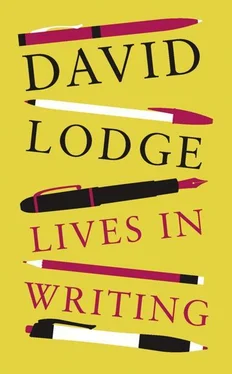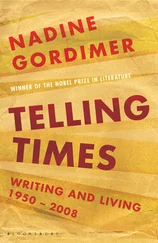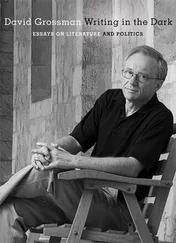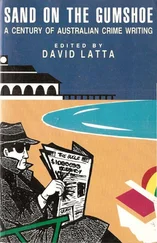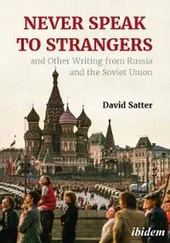Apart from what we learn from Greene’s letters, which are quoted at length, we get from this book a less vivid sense of what Greene was actually like as a person in later life than from the much shorter and more selective memoirs of the companion of his later years, Yvonne Cloetta, and his friend Shirley Hazzard. 2Sherry has no anecdote as revealing as, for instance, Yvonne Cloetta’s first intimation of The Honorary Consul :
One morning, he appeared in the doorway, looking extremely worried, and announced quite abruptly, ‘It’s terrible to think that from now on I’m going to have to live for three years with a certain Charlie Fortnum.’ And he went back to whatever he was doing, without saying another word.
Greene knew from experience how long a full-length novel would take to complete at this stage of his life, and how much it would cost him. ‘Retirement is always a distressing time for a man. But for a writer it is death,’ he remarked to Yvonne Cloetta on another occasion. So he went on writing although he found it harder and harder, and was seldom satisfied with what he produced, even when his readers were. He was his own harshest critic. ‘I think it stinks,’ he said, sending the manuscript of Our Man in Havana to Catherine; and of A Burnt-Out Case , again to Catherine: ‘I hate the book. There are bits I like, but I’ve hardly had a moment of pleasure working this time and the result is muddled and shapeless.’ His well-known practice of writing a certain number of words a day (500, later reduced to 300) was a ritual that enabled him to carry on a task that he often found agonisingly difficult. The gradual accumulation of words was reassuring and he attributed to the figures an almost magical significance, cabling Catherine on the completion of A Burnt-Out Case : ‘FINISHED THANK GOD 325 WORDS SHORT ORIGINAL ESTIMATE.’ The novelist Shirley Hazzard was friendly with Greene from the late 1960s onwards, when she and her husband lived on Capri where Greene had a villa. ‘When from time to time Graham told us, “I have a book coming out,” he would occasionally add, “Not a specially good one.”’ Hazzard’s own summary judgement of the later work cannot be bettered:
The inspired pain of the earlier fiction would not recur; or even the intensity of those lighter and livelier works that Graham had once differentiated as ‘entertainments.’ What remained was professionalism: a unique view and tone, a practised, topical narrative that held the interest and forced the pace of the reader. Poignancy was largely subsumed into world-weariness, resurfacing in spasms of authenticity.
The final instalment of Sherry’s biography is then — perhaps inevitably, given Greene’s long productive life — a story of gradual decline of creative power from a very high peak of achievement. The second volume ended with the composition of The Quiet American (1955), Greene’s last fully achieved masterpiece. It was also the first novel to hint at the waning of his belief in the Roman Catholic religious doctrine which had underpinned his most powerful and important previous novels, from Brighton Rock (1938) to The End of the Affair (1951). Politics, rather than religion, provides the ideological frame of reference which defines character and conflict in The Quiet American , and it has acquired a justified reputation as a novel prophetic not only of the folly of the American involvement in Vietnam but also of other ill-fated foreign adventures, including the war in Iraq. Greene’s play The Potting Shed , a hit in London in 1957, but a flop in New York, showed that his imagination was still kindled by the more extreme paradoxes of Catholic spirituality, but Our Man in Havana (1958) treated potentially dark and serious matter in a spirit of comedy.
This was a time of great turmoil in Greene’s personal life. His grand passion for Catherine Walston was slowly and painfully burning itself out. Though they continued to meet occasionally, Catherine resisted Greene’s pleas to leave her husband and children to live with him — in exactly what terms, we don’t know, because he burned all her letters; but his letters to her have survived and Sherry quotes them extensively. Greene was now in love with another woman, the Swedish actress Anita Björk, whose husband had recently committed suicide. He visited her frequently in Stockholm, and there was evidently a strong sexual charge between them, but Anita, tied to her career and her children, was no more willing than Catherine to throw in her lot with him. Could this, one wonders, have been the secret attraction of both relationships for Greene, always shy of emotional ties and commitments, even as he agonised over them? ( The Human Factor has an epigraph from Conrad: ‘I only know that he who forms a tie is lost.’) He refers openly to his assignations with Anita in his letters to Catherine, perhaps as a subtle form of punishment, but he never wants to break off either relationship. After parting from, and then returning to, Anita, he writes to Catherine: ‘I feel hopelessly muddled. I missed her more than I thought I would, but now that’s healed, it’s you I miss. Am I crazy or do I just happen to love two women as I never have before?’ Several people thought he was crazy, including his wife Vivien, who cited his compulsive travelling, never staying in one place for more than a few weeks. There is probably enough material for a book called Graham Greene, Frequent Flyer. At the end of one year he calculated that he had flown more than 40,000 miles, quite a lot for someone whose occupation is usually described as ‘sedentary’. His letters to Catherine constantly proposed meetings in various exotic locations all round the globe; and his friend Michael Meyer tells an amusing story of an exhausting trip to Fiji and Tahiti that Greene arranged simply to escape Christmas, a feast he did not enjoy. Because of problems with their flights and weather they crossed the international dateline three times and experienced three successive Christmas Eves.
Greene was still married to Vivien, though living apart from her, and he never sought a divorce, annulment, or legal separation. In the eyes of the Church he was of course committing grave sin. He had his own way of reconciling his conduct with his conscience — or perhaps by the late 1950s he had privately ceased to believe in the validity of Catholic moral theology. To the world at large, though, he was still the great Catholic Novelist (however strenuously he insisted that he was a novelist who happened to be a Catholic) and the experience of being pestered and appealed to for spiritual guidance by various devout and often troubled co-religionists, including priests, was an irony that caused him much embarrassment. ‘I felt myself used and exhausted by the victims of religion. .’ he complained later. ‘I was like a man without medical knowledge in a village struck with plague.’ When the affair with Anita finally came to an end in 1958, Greene’s appeals to Catherine became more fervent, and his frustration more acute. He was also oppressed by the fear that his creativity was drying up. According to Sherry he came near to suicide, not for the first time in his life. Instead he went to a leper colony in the Congo, seeking material for a new novel.
A Burnt-Out Case (1961) is not a completely satisfactory novel, but it is a peculiarly fascinating one for anyone interested in Greene because of its confessional nature. In the character of Querry, the famous Catholic architect who is praised as much for his spirituality as his artistry, but who in fact reveals himself to be totally lacking in faith in either art or religion, and a cold-hearted failure in personal relationships, Greene deliberately invited a biographical reading of the novel that would be uncomfortable for his Catholic admirers. Sherry, needless to say, finds models for other characters, and without much difficulty, since Greene was more or less making up the story as he did his research, putting in characters and incidents that he observed, as one can see from his journal written at the time, later published in In Search of a Character: two African Journals (1961). But Sherry’s effort to connect the character of the obnoxious journalist Parkinson with a friend of Greene’s called Ronald Matthews seems to me forced and unconvincing. Matthews was a journalist who had written a memoir of Greene, published in French as Mon Ami Graham Greene , which Greene disliked enough to prevent its publication in English; but there is no significant resemblance between the two men. What makes Parkinson live as a character, as Sherry’s quotations from the novel remind us, is Greene’s creative use of language, first, in describing the journalist’s gross physical appearance (‘his neck as he lay on his bed was forced into three ridges like gutters, and the sweat filled them and drained round the curve of his head on to the pillow’), and secondly in the wonderfully cynical rhetoric with which Parkinson defends his sensationally fabricated journalism, e.g.: ‘Do you really believe Caesar said Et tu, Brute? It’s what he ought to have said and someone. . spotted what was needed. The truth is always forgotten.’
Читать дальше
